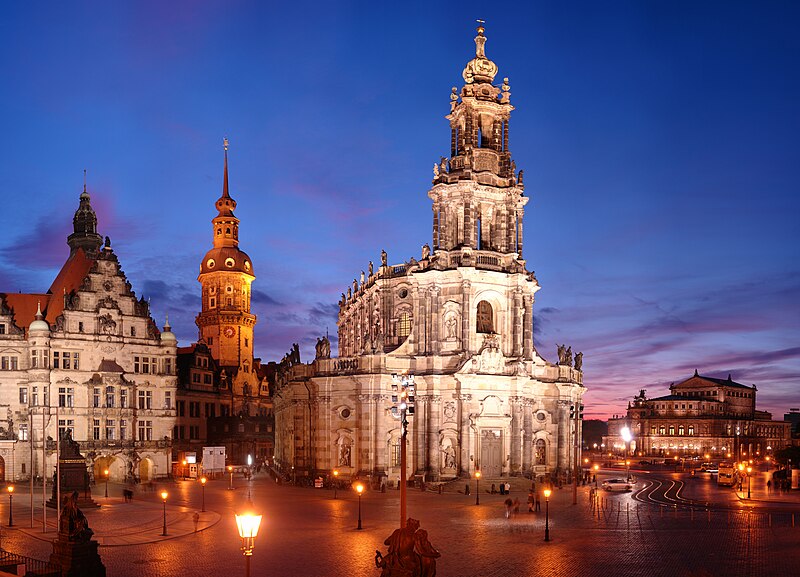This article features the East German stamp of the Silbermann organ in Dresden. It is the highest denomination of a set of four stamps from 1976 celebrating baroque organs by the famous German organ builder Gottfried Silbermann. Make sure to check out the articles about the stamps featuring organs from Rötha, Freiburg, and Frauereuth.
Organs on Stamps
Pipe organs are among the most prevalent specific instruments that appear on stamps. In other words, while other stamps might feature a generic violin, a generic guitar, or a generic piano, stamps with organs feature very specific instruments. Of course, organs are usually very large and expensive and custom built for a specific church or cathedral. Large pipe organs can even be in use for several centuries (with regular maintenance and restoration work). Organs can become elements of pride for a parish, a community, or even a country.
You can read other posts about organs on stamps from Hamburg, Germany; Wasquehal, France; Oaxaca, Mexico; and from the Vatican City.
The Hofkirche, Dresden

The Hofkirche church, or cathedral, was built between 1738 and 1751 according to designs of the Italian architect Gaetano Chiaveri. As far as European cathedrals go, it is relatively new, and was commissioned by Augustus III, Elector of Saxony and King of Poland. Significantly, it was the grand catholic church of the city’s ruling class standing in opposition to the Frauenkirche, a Protestant church favored by the majority of the population. The Hofkirche was even built with a connection to the Dresden castle so it was easy for the Elector and his entourage to attend services.
In February of 1945, during the terrible bombing from the Allied forces in the Second World War, the cathedral sustained incredible damage. It was only in 1962 that the East German government began restoration of the building. The church is now the cathedral church for the Diocese of Dresden-Meissen.
In 1750, as the completion of the cathedral was nearing, the court engaged Silbermann to provide a grand organ for the cathedral. It was to be the grandest, and last, instrument of his distinguished career. Silbermann (1683-1753) was the son of Michael Silbermann, a carpenter in Frauenstein. Beginning in 1702, Gottfried apprenticed with his older brother Andreas, learning organ building in Strasborg, in the Alsace region of France bordering Germany. There, Silbermann was able to study the organs of both the German and French schools. In 1711, Gottfried established his own workshop in the city of Freiburg. It is thought that he built around fifty organs, of which, incredibly, thirty-five survive. His instruments are known for their bright tone and for plentiful reed stops.
The Organ

The design of the instrument is by Silbermann, but illness, probably related to lead poisoning from working with metal pipes his whole life, kept him from doing much of the construction work. He died in 1753 while the instrument was still under construction. Instead, the work of building the instrument fell to Silbermann’s apprentices Zacharias and Johann Gottfried Hildebrandt. It was completed in 1755 and is the largest instrument ever built by Silbermann. It has three manuals and a pedalboard, forty-seven stops, and nearly 3,500 pipes.
As with many organs, during the nineteenth and early twentieth century there were many modifications, including to the pitch and temperament of the instrument. Then, in 1944, the pipes and mechanism were taken to the St. Marienstern monastery to avoid destruction due to the War. However, the 1945 bombing, destroyed the case and bellows. Using old photos, rebuilding of the organ case took place between 1963 and 1971. A complete restoration to its baroque specifications occurred in 2001 and 2002. While at one point there were three Silbermann instruments in Dresden, today the Hofkirche cathedral organ is the only one that survives.
The stamp

Scott Number DD 1710
The four stamps in the Silbermann organ series are rather simple. The organ appears in a straight on perspective against a bold color, in the case of the 50 pfenning stamp with the Dresden organ, a violet brown. The entire set is the design of Gerhard Voigt.
Finally, you can hear this magnificent instrument in many recordings, check out this outstanding performance by Jihoon Song below:

